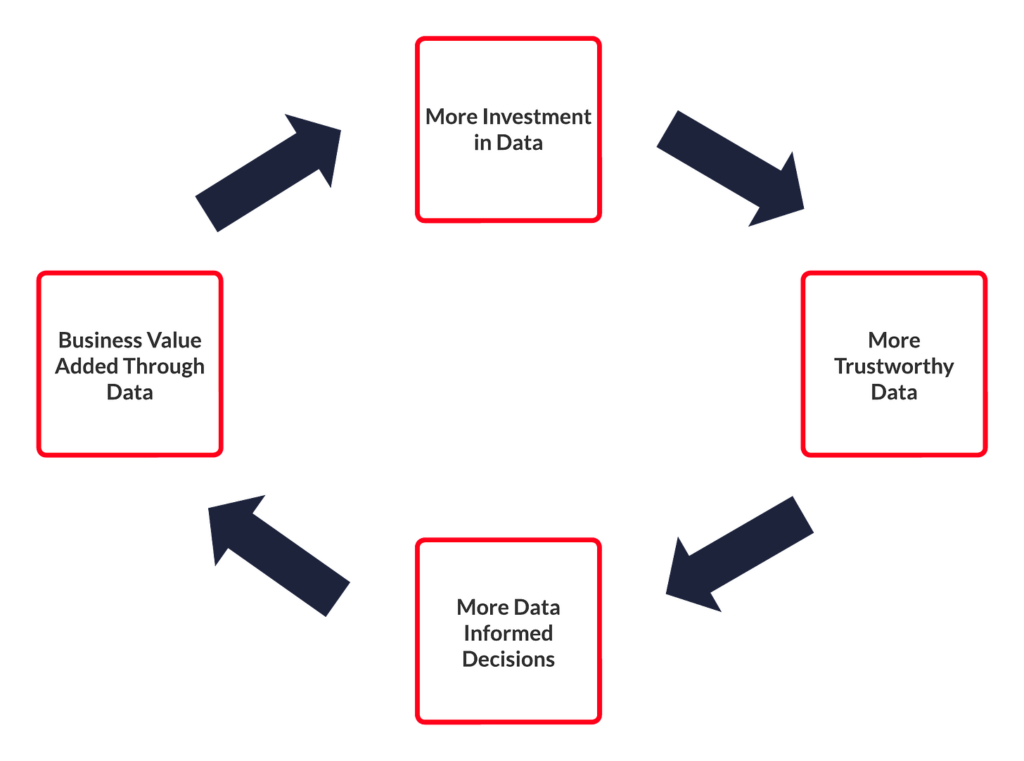When was the last time you did a data quality check? If you’re struggling to remember, know this: the cost of poor data quality to organisations is almost $13 million on average every year, according to Gartner. It’s an eye-watering figure! Whether you ran a quality exercise last month or last year, the importance of auditing your data to uphold its quality can’t be overstated.
At Oakland, we know that running a data quality check can seem daunting, especially within an organisation that handles an abundance of data. It can also sound expensive. So, do you need to invest in a shiny new tool to carry out the exercise, or is legacy software enough?
Read on to find out and understand the impact of regular data quality monitoring along the way.
Why is Data Quality Important?
Data quality is a key part of successful data management. It makes sure the data you’re inputting, analysing, and reporting on is accurate, complete, consistent, valid, and reliable.
If you’re handling poor quality data, then you open up space for a host of negative impacts to be felt across the business. For instance, outdated customer data can lead to upselling opportunities being missed. Or, incomplete data that causes employees frustration and impacts both their satisfaction and productivity. Check out our blog for more information on the costs of poor quality data.
Not to mention if you want to use AI to improve your business processes and efficiency you have to get the basics right, which starts with the quality of your data.
The Impact of High Quality Data
The higher the quality of your data, the higher the overall quality, accuracy, and reliability of the decisions you – and your people – are using it to make. The more you invest in your data, the more opportunity you have to add value to both your people and processes, resulting in increased:
- Confidence
- Productivity
- Profitability

Are Traditional Data Quality Checks Outdated?
It’s no secret organisations are handling bigger, more varied volumes of data than ever. And it’s only going to grow. Traditionally, data quality checks were a manual task, meaning they were prone to human error. They also ate into a vast amount of time, reducing efficiency and risking inaccurate or low quality data being detected too late.
Today, there are plenty of new and evolving technologies out there to support organisations in upholding data quality. Think artificial intelligence, which reduces the need for manual intervention (and the risk of human error), or machine learning algorithms, which can quickly spot anomalies and patterns in data.
Learn how we can help you leverage AI to unlock more value from your data: Artificial Intelligence.
Do You Need to Invest in New Technology?
If you’re just starting out on your data quality journey, expensive technology and tooling isn’t necessarily the answer, and in many cases, it can be a costly distraction. We often see organisations with low data maturity jump straight into the tech, hoping they’ll solve deep-rooted issues. But without a clear understanding of what you’re trying to improve and why technology alone won’t deliver meaningful change.
For organisations that have a clear strategy for managing and improving data quality, the right technology can absolutely accelerate progress. They can bring speed, automation, and scalability to what you’re already doing well. But choosing the right tool is key, and with so many options out there, it’s easy to pick something that doesn’t quite fit.
There’s no silver bullet. Data quality tooling should be chosen based on the specific challenges you’re trying to address. It sounds obvious, but we’ve seen too many teams invest in tech that, six months in, isn’t meeting their needs.
It’s amazing how many organisations manage their data quality through Excel, so you don’t always need an all-singing, all-dancing data quality tool to get an overview of the state of your data quality.
So, how do you get started? Here’s the advice from our data quality consultancy specialists.
How to Ensure Data Quality Without New Tools
1. Perform a data profiling exercise
First things first, you need to make sure you understand your current data quality. A data profiling exercise is the best place to start. This will give you an overview of information about your data, from the most popular values to if there are any duplicate values, and how many. This usually highlights anything that looks out of the ordinary.
To run out a data profile, you need to choose a small subset of data to investigate. For instance, customer contact details (addresses, emails, and phone numbers) As we mentioned you can use simple Excel to help with this, but if you are looking for more heavy lifting then Databricks, or Microsoft Purview can be good options to help carry out the profiling and analyse the results. Then, you can start to ask questions to better understand the quality of the data, such as:
- What are the most common values and value distributions in key fields?
- What percentage of fields are null, zero, or default values?
- Are there outliers or anomalies we weren’t expecting?
- How many formats/structures are present in supposedly standard fields?
Enhance your decision-making even more with our Data Analytics consultancy services!
2. Assess data by developing business rules for each field
Now, you can actively assess your data by developing business rules around each data field. Make sure you assign each rule to data quality dimensions, such as:
- Completeness
- Accuracy
- Validity
- Timeliness
- Consistency
- Uniqueness
As you carry out your data assessment, you’ll begin to spot data that’s below an approved threshold or doesn’t follow the business rules you’ve set. With this knowledge, you can then carry out a root cause analysis to find out the cause of the issue. From here, you can put together improvement options and a long-term remediation plan. You may need to look at shorter-term fixes, too, depending on the types of issues you find in your data.
Here’s an idea of what your data quality improvements could involve:
- Ensuring values are updated in suitable timescales.
- Providing training, supporting documents, a business glossary or data dictionary to those who enter the data itself.
- Developing regular scorecards that track quality KPIs (completeness, accuracy, timeliness) for high-impact datasets.
- Ensuring that key reference data (like country codes, product categories, or customer types) are aligned and centrally managed.
- Setting up automated alerts or dashboards to flag anomalies, missing values, or outliers in real time.
- Assigning responsibility for data quality to specific individuals or teams to ensure accountability and continuous improvement.
3. Put regular data quality monitoring in place
With the bulk of data profiling done, you can put regular monitoring in place. Not only will this ensure you’re proactively keeping track of your data quality, but it enables you to set alerts when data quality drops or there are improvements that need investigating.
Power BI is one of the best ways to do this without a new or fancy data quality management tool. Developed by Microsoft, Power BI is a software product that helps you visualise data. Primarily, it’s focused on business intelligence – hence the name ‘Power BI’!
You can use Power BI to create dashboards that record and track your data quality, with fast access to results. The Microsoft software is also great for presenting your findings to colleagues or stakeholders, such as data stewards and project managers or your executive board.
For insight on how you can get executive buy-in for data-driven excellence, read: How to deliver a successful data strategy presentation.
Remember, Communication is Key
As we’ve set out above, you don’t need a new or state-of-the-art tool to run a data quality exercise and return insightful, actionable findings. However, there’s one thing you do need: good communication.
The better your people’s understanding of the requirements of the data your organisation holds, the easier it is for them to play their part in improving data quality activities, like data entry. Make sure you have your business rules approved and then communicated across the business, so everyone’s working with the same data quality ideals in mind.
We also recommend you share any improvements that come from data quality reviews and assessments, so your people understand the tangible difference it’s making.
Data Quality Consulting
For more support on how you can improve data quality within your organisation, please contact our friendly team. And if you’re interested in more insight from our data quality consultants, read our blog: Why invest in data quality?


